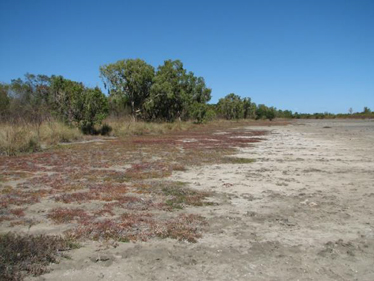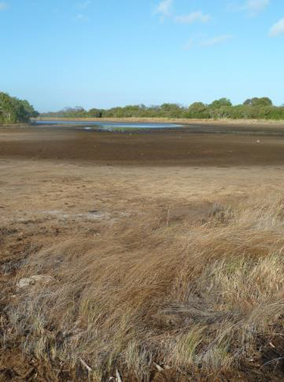Saltmarshes


Habitat type: Saltmarshes
Other key words: Saltmarsh wetlands
Description: Saltmarsh is a major component of coastal landscapes in Queensland. It is situated in the intertidal zone, below the level of Highest Astronomical Tide but well above the low tide level. The highest areas of saltmarsh may be inundated with seawater by only the highest spring tides.
Saltmarshes lie on low gradient marine and estuarine plains and so are not usually found where the coast is dominated by sandy beaches, rock or steeply rising landforms. In Queensland, saltmarshes are typically situated landward of mangroves although they are not dependent on a co-existence with mangroves. Unlike mangrove wetlands, saltmarshes are devoid of trees and tall shrubs, or support only occasional examples.
Saltmarshes occur discontinuously along the entire coastline of Queensland.
Like the softer intertidal mudflats, saltmarshes support invertebrate fauna such as crabs, prawns, molluscs, other crustaceans and worms. Saltmarshes play a significant role as a feeding and/or nursery area for fish, notably the smaller species such as glassfishes, perchlets and gobies.
Some animals that use this habitat type: Yellowfin bream, juvenile barramundi, chestnut teal, yellow chat, beach stone-curlew, Australian painted snipe, Pacific golden plover, red-necked stint, marsh sandpiper, sharp-tailed sandpiper and water mouse.


